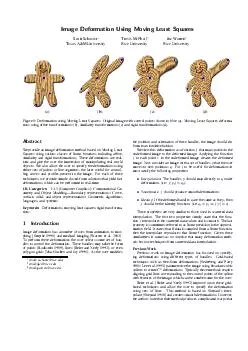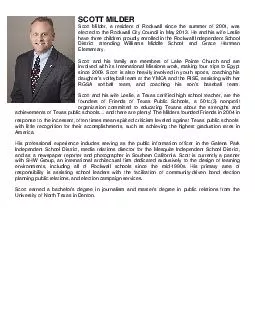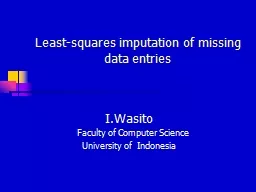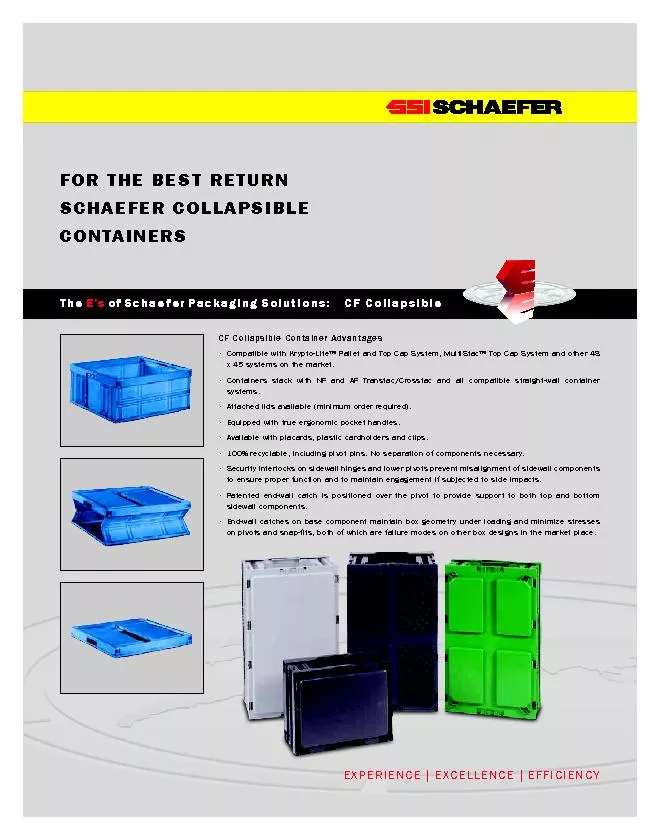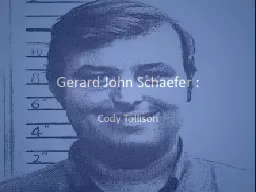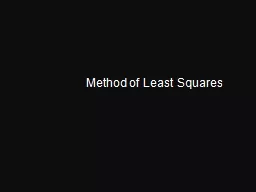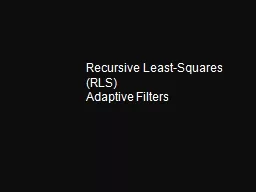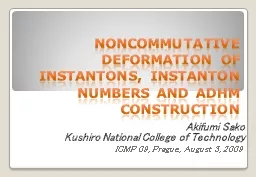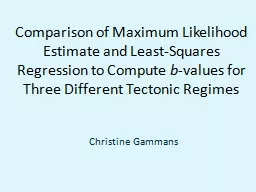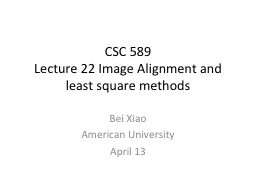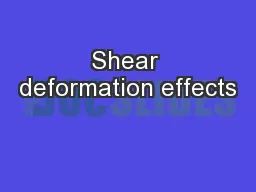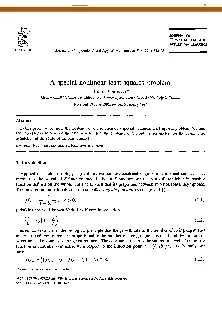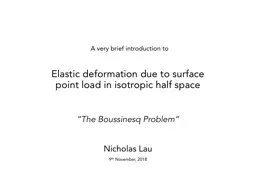PDF-Image Deformation Using Moving Least Squares Scott Schaefer Texas AM University
Author : tatyana-admore | Published Date : 2014-10-06
Original image with control points shown in blue a Moving Least Squ ares deforma tions using af64257ne transformations b similarity transfo rmations c and rigid
Presentation Embed Code
Download Presentation
Download Presentation The PPT/PDF document "Image Deformation Using Moving Least Squ..." is the property of its rightful owner. Permission is granted to download and print the materials on this website for personal, non-commercial use only, and to display it on your personal computer provided you do not modify the materials and that you retain all copyright notices contained in the materials. By downloading content from our website, you accept the terms of this agreement.
Image Deformation Using Moving Least Squares Scott Schaefer Texas AM University : Transcript
Download Rules Of Document
"Image Deformation Using Moving Least Squares Scott Schaefer Texas AM University "The content belongs to its owner. You may download and print it for personal use, without modification, and keep all copyright notices. By downloading, you agree to these terms.
Related Documents

